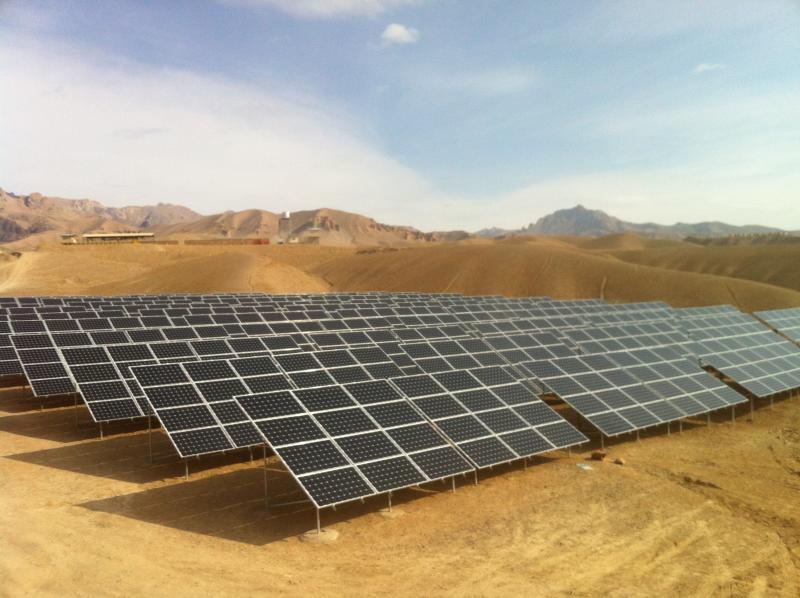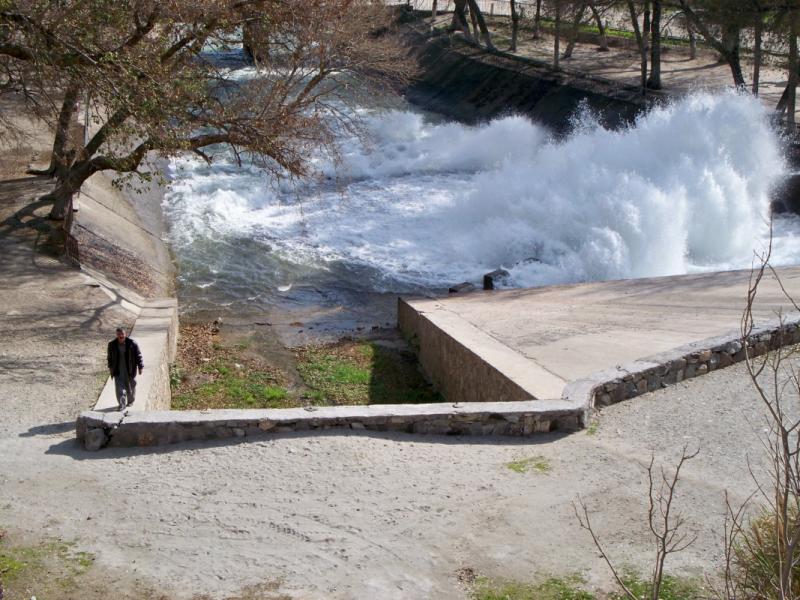Interview with Tony Woods
Founder, Sustainable Energy Services International (SESI)
Location: Global, with origins in Central Asia / Pakistan and Afghanistan border
“I didn’t know what I didn’t know, so there was nothing to be afraid of.”
After spending time working in Singapore, Tony Woods was on an ambitious bicycle tour, from South Africa to China, when he was inadvertently led to the role which would become his life for the next two decades.
As he stopped in isolated villages across the route, which took him over the north-western frontier along the Karokoram highway, he noticed a trend in the electricity systems that people were using. Or, more specifically, the lack of efficiency in them. The engineer in Woods questioned why people he met were still manually operating the machines. “The hydro electric units were not controlled, particularly in the northern parts of Pakistan and Nepal,” he says. “It takes an operator with his hand on the valve to regulate the amount of water going through the turbine, and balance the water flow with the amount of water being generated. When a village turns off all the lights at night, someone would have to close the valve down to keep the load in the generator balanced.” Woods likens the issue It’s like going down in third gear in your car without your foot on the brakes – if the load is not balanced, then you just accelerate.”
Lesson one, says Woods, is simply starting your business. “I’d always wanted to do it – I didn’t know what I didn’t know, so there was nothing to be afraid of.” In New Zealand, where he was raising a small family, the manufacturing and electrical engineer took his technical solutions to funding agencies with an interest in community development. In partnership with Auckland University, he came up with a technology which could be deployed abroad: Sustainable Energy Services International (SESI) has worked on hybrid power systems in the Punjab and the Sindh, but also in more ‘inhospitable and rugged’ areas, as the website states, such as Quetta or more remote regions in Balochistan. The company started to make a profit thanks to low overheads whilst working with the Aga Khan Rural Support System, upgrading hydroelectric systems in Chitral, in the Hindu-Kush mountain range near the Afghan-Pakistan border.
Lesson two, was marketing something to someone with no money at a time when there was huge interest in the early days of renewable energy. Many of his customers were indeed those people – SESI worked on wind, solar and diesel hybrid systems in Gwadar Port and the Zardaloo Valley in Balochistan, as well as in North West Frontier, and has impacted at least 6,000 – 7,000 houses. In Bamiyan, Afghanistan, a project funded by his government, 2,500 houses were fitted with prepaid metres. Afghan households banked the money, bringing their receipts to the municipal power company, which cut down vastly on any potential for corruption. SESI has also worked in the Pacific, Africa, Central Asia and in the wider region – India, Bhutan, Sri Lanka and the Philippines, amongst others, and remains active in Afghanistan.
Lesson three was not accommodating the community too much, or they would fail. Woods felt it became apparent that he was dealing with a social issue as well as an engineering issue. “Those barriers are not as clear cut as us engineers would like to believe they are,” he adds. “Engineers like to focus on practical, technical questions which they understand and can resolve the best. You get 100% of investment in hardware, but maybe 90% of the long-term project risk resides in the software – the community management, ownership models, the non-technical reasons that will decide the success of the project in the long-term.”
The main social issue in this “software problem” was the lack of ownership that some communities might feel, particularly with systems being gifted to communities thanks to NGOs, aid agencies or grants. A system installed by foreigners, which might not work six months later, might not inspire a sense of agency in local communities. “Maybe someone doesn’t want to be the champion of the project, or there is simply a lack of trust,” says Woods, lamenting the introduction of what he sees as a “commercial utility with a capitalist model” into a rural setting.
A lack of management also leads to poor quality systems affecting the opinions of locals in rural settings, as well as in developed countries, says Woods. “If you build a Rolls Royce standard system, it’s going to last longer if it’s maintained – but otherwise it’s just a matter of time,” says Woods. The issue of developing responsibility amongst the consumers remained an issue; with metres in each house, it was now up to an operator to check the data each month and pay for the power. “This was a big step for the community to understand that if you don’t pay, there will be no maintenance or spare parts,” says Woods. “People have to understand or at least develop agreements on how to collect money from power meters, and put it in the bank.”
***
As technology has become more robust, Woods says that there is less for the community to worry about on the technical side. Other changes include contract sizes being much bigger than they used to be, and ensuring that an off-grid village can indeed go on-grid should an authority such as the Pakistan Water and Power Development Authority (WAPDA) turn up and deem it so. “We now build the community off-grid power systems with all of the transmission and distribution on the basis that one day, the national grid will arrive in a village or a valley, without having to rebuilt the whole thing,” says Woods. This means that power poles have to be the right height, cables have to be of a national standard, which is something that was not executed for isolated villages propped up with bamboo poles in uncertified distribution networks in the past.”
The other evolution came in the motivations of SESI as a company, which is currently working on community, solar irrigation and PV in Malawi, Mozambique and Senegal. The goal was not to make money from selling electricity, says Woods, but to be a construction company and development consultancy in one. “Now, we are looking more to invest in projects ourselves, meaning we will own the networks and sell the electricity, moving into local PV stations and ensuring communities continue to benefit. With the advent of cheaper solar power, governments are looking to replace their oil- or coal-fired power stations. Bigger installations are also more commercialised, so there’s no need for subsidies anymore.”
At its peak, SESI employed 18 staff members, and now there are 6 in the team, and more subcontractor positions open. Woods cites Torong Phedi in Annapurna in Nepal, which has one of the highest hydro systems in the world at 4,500 metres, as one of his favourite places, because of the impact that the company had in reducing deforestation and in running a water treatment station. “We knew our way around Afghanistan – the logistics, the shipping routes, and how to get stuff done – we’ve been there since 1999,” adds Woods. “So Bamiyan was a favourite for its scale, and it was a real sense of achievement getting it finished in such a difficult location.” The project was backed by the New Zealand government.
A final lesson has been in scoping out work and pricing it accurately, says Woods. “If you can sell that experience to funders, that’s an advantage in tendering.” With off-grid systems, the economic return has been the most important one, “but that’s not a financial return,” says Woods. “Investors need to accrue the full benefit of what they’re installing – but health, education, employment” – aka making a smarter village – ” do not become monetised for the investor, who was the first to take the risk in investing in an unstable region, like the ones that SESI has been working in. “We want to do good, and we want to do well,” says Woods.
Nabeelah Shabbir







